Retro Replay Review
Gameplay
World Cup 98 for the Game Boy brings the thrill of the French tournament to a 2D isometric pitch, delivering fast-paced matches that capture the essence of international football. Players can choose from a wide selection of national teams, each with distinct strengths and weaknesses, and compete in a full knockout tournament. Despite lacking official player names, the game offers enough depth through team-specific playstyles and customizable formations to keep fans engaged.
The controls are intuitive and responsive, allowing you to dribble, pass, and shoot with ease using the handheld’s buttons. Special moves such as lofted through-balls and timed volleys add a layer of strategy, rewarding well-timed inputs. Tournament mode mimics the real World Cup structure, with group stages followed by elimination rounds, while exhibition matches let you jump straight into the action for quick pick-up-and-play sessions.
Beyond the main tournament, World Cup 98 includes a practice mode where you can hone set pieces like free kicks and corners. This mode proves invaluable for mastering the isometric angle, which can initially feel awkward to players accustomed to top-down or side-scrolling views. The AI difficulty scales up nicely, ensuring that both newcomers and seasoned handheld gamers find a suitable challenge.
One notable omission is the absence of an official manager career mode. Instead, you focus solely on match-to-match performance, which keeps the pace brisk but limits long-term progression. Nevertheless, the core gameplay remains addictive thanks to quick respawns, tight passing lanes, and the excitement of penalty shootouts that often decide close contests.
Graphics
World Cup 98’s isometric viewpoint stands out among handheld sports titles of its era, offering a pseudo-3D perspective that gives the pitch depth and a clearer view of player positioning. Sprites are small but well-defined, each team differentiated by unique kits and color palettes that stay visually consistent throughout the tournament.
The animations, while limited by the Game Boy’s hardware, are surprisingly smooth. Players slide tackles, celebratory poses, and referee signals are all conveyed with just a handful of frames, yet they read clearly and inject personality into the matches. The overhead crowd—represented by simple rows of color—adds atmosphere without overwhelming the action.
Detail on the pitch such as corner flags, center circle markings, and penalty areas are crisply drawn, ensuring you never lose sight of the game’s flow. The grass texture is subtle, but the color contrast between teams and backgrounds aids visibility, even on the original monochrome Game Boy or its color-capable successors.
While modern gamers may find the visuals primitive, they emulate the handheld FIFA 98 engine faithfully, offering a nostalgic charm. The game prioritizes gameplay clarity over flashy effects, ensuring that every pass and shot remains readable at speed—an essential quality for a competitive football sim on limited hardware.
Story
As a sports simulation, World Cup 98 doesn’t follow a traditional narrative but instead recreates the journey of a national team from the group stages to the final in Paris. The “story” unfolds through match results, dramatic comebacks, and the high stakes of knockout football, creating its own emergent drama.
Pre-match menus and victory celebrations include text-based updates that mirror the hype of the 1998 tournament, from opening ceremonies to the final whistle. These bite-sized narrative elements help frame your progress, giving context to each goal and tactical decision you make on the pitch.
Music and sound effects play a supporting role in storytelling, with jaunty fanfares heralding goals and suspenseful drumbeats underscoring tense penalty scenarios. Though there’s no spoken commentary, these audio cues ramp up the tension and reward, reinforcing the tournament atmosphere in lieu of a cinematic storyline.
Ultimately, the game’s “plot” is what you create through your matches: underdog victories, heartbreaks in extra time, and triumphant trophy lifts. This emergent storytelling draws you in, making each tournament feel uniquely memorable and encouraging replay after replay.
Overall Experience
World Cup 98 on Game Boy succeeds as a compact, accessible football simulation that nails the excitement of knockout play. Its streamlined menus, quick-match options, and practice modes ensure you spend less time navigating screens and more time scoring goals. For handheld football enthusiasts, it offers a satisfying mix of strategy and arcade-style action.
The lack of official player names is a minor gripe in an otherwise polished package. By focusing on team attributes and on-field tactics rather than star power, the game encourages you to master formations and playstyles, which can feel more rewarding in the long run. The isometric view, once mastered, provides a unique vantage that sets it apart from other handheld titles of the period.
Whether you’re seeking a nostalgic trip back to the late ’90s or simply want a solid football title for your Game Boy collection, World Cup 98 delivers. Its faithful adaptation of the official tournament format, combined with responsive controls and charming visuals, make it a worthwhile purchase for fans of retro sports games.
In conclusion, World Cup 98 offers a well-rounded experience that balances authenticity with handheld-friendly design. It may not boast the bells and whistles of console counterparts, but its focused gameplay and tournament-driven “story” more than compensate, making it a standout title for the platform.
 Retro Replay Retro Replay gaming reviews, news, emulation, geek stuff and more!
Retro Replay Retro Replay gaming reviews, news, emulation, geek stuff and more!

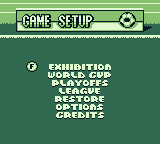
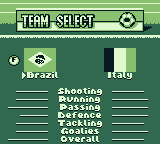
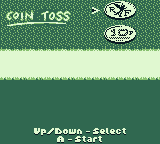
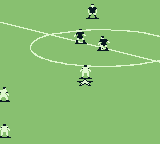
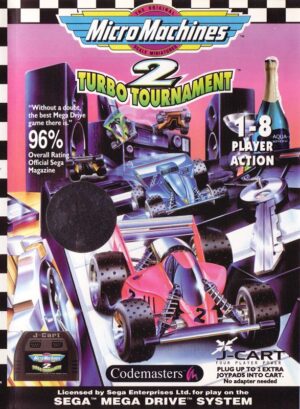


Reviews
There are no reviews yet.